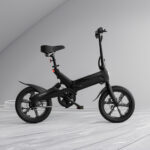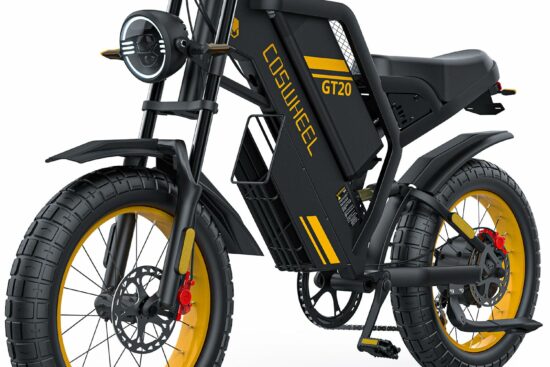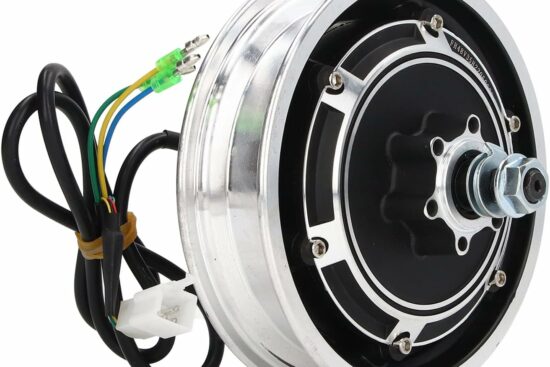
Electric city bikes are quickly becoming a popular mode of transportation in urban areas. With advancing technology and increasing environmental awareness, e-bikes provide an efficient, sustainable way to get around congested cities while avoiding the hassles of driving and parking a car. This guide explores the benefits of electric city bikes, features to look for when buying one, and what the future may hold for urban e-bike adoption.
Benefits of Riding an Electric City Bike
Electric bikes retain all the advantages of regular bicycles, with an added boost of power to make riding easier and faster. Here are some of the biggest benefits of using an e-bike for city commuting and errands:
- Faster speeds and less effort – Electric motors provide power assistance up to 20 mph, with some able to reach 28 mph. This makes travel time quicker compared to regular bikes without needing to exert as much energy pedaling.
- Reduce environmental impact – E-bikes are emission-free, supporting green transportation goals in many cities. They also use less embodied energy in manufacturing compared to electric cars.
- Avoid traffic and parking issues – Bikes zip past stuck vehicles and don’t require parking spots.
- Fun way to get exercise – Pedaling an e-bike provides light exercise. The electric assist makes it easier for commuters to arrive fresh instead of sweaty.
- Potentially save money – Electric bikes may have a higher upfront cost but save on gas, parking, and public transportation expenses long-term.
Types of Electric City Bikes
Not all electric bikes are the same. The power of the motor, battery range, and bike design impact speed, distance, and riding experience. Some common types of e-bikes for urban use include:
- Commuter e-bikes – Designed for efficient daily travel to work and around town. Their step-through frames are easy to mount and ride in work attire. Smaller batteries offer around 40 miles per charge.
- Cargo e-bikes – Built to handle heavy loads of groceries or children in rear cargo areas and long rear racks. Sturdy frames and larger batteries provide 60-100 miles of range.
- Folding e-bikes – Compact frames fold up easily for storage and bring on public transit. Typically smaller batteries with 15-30 mile range.
- Speed e-bikes – Reach speeds of 20-28 mph thanks to more powerful motors. Require helmets and license to ride in some areas. Up to 80 mile battery range.
Consider how you plan to use an electric bike to choose the right type for your needs. Faster road e-bikes aren’t necessary for neighborhood errands but can be ideal for longer commutes.
| Pros | Cons |
|---|---|
| Faster commute times | Higher upfront costs |
| Eco-friendly transportation | Shorter ranges than gas vehicles |
| Fun way to get exercise | Require charging infrastructure |
| Avoid traffic and parking problems | Heavy models can be difficult to carry |
Top Features to Look for in Electric City Bikes
When shopping for the best electric bike to meet your needs, keep an eye out for these helpful features:
- Powerful motor – Motors of 250-750 watts provide enough power for urban stop-and-go traffic without overheating on hills.
- Quality lithium-ion battery – Built to last through hundreds of charges. Higher capacity means longer rides between charges.
- Comfortable ergonomic design – Adjustable handlebars, seat position, and ease of pedaling improve the ride experience.
- Integrated lights – Headlights and taillights that run off the bike battery provide visibility at night and in bad weather.
- Theft deterrents – Features like frame locks, alarm systems, and GPS trackers help protect your investment against theft.
Additional available features to consider include large cargo capacities, fenders, suspension, and regenerative braking that charges the battery while coasting or braking.
Safety Considerations for Electric Bike Riders

When riding an e-bike, it’s important to be aware of some key safety considerations. Here are some top tips for staying safe while enjoying your electric bicycle:
- Wear a helmet – Protect your head in the event of crashes or falls.
- Follow traffic laws – Obey stop signs, traffic lights, and lane markings just like a car.
- Use lights – Increase visibility to other vehicles with bright front and rear lights, especially at night.
- Watch your speed – E-bike pick up can surprise you. Moderate speeds to stay in control.
- Avoid distractions – Keep eyes on the road instead of your phone to anticipate hazards.
- Consider insurance – Some policies help cover e-bike damage in accidents.
- Ride defensively – Be alert to car doors opening and vehicles pulling in/out.
- Charge safely – Use manufacturer’s charging guidelines and don’t overcharge batteries.
Always prioritize safety when riding your electric bike. Following traffic rules and being alert helps prevent accidents. See this guide for more e-bike safety tips.
The Future of Electric City Bikes

Several trends point toward rising adoption of electric bikes in cities around the world. Here are some ways the future looks bright for urban e-bikes:
- Improving technology – Lighter batteries, more integration of pedal assist sensors, and theft-deterrent advances will improve appeal.
- New infrastructure – Cities are adding protected bike lanes, charging stations, and parking to support e-bike commuting.
- Government incentives – Purchase rebates, tax credits, and e-bike share programs make them more accessible.
- Environmental benefits – E-bikes support cities’ emissions-reduction and clean transportation goals.
- Risingownership – U.S. e-bike salesare projected to grow 10% yearly as prices decrease and interest increases.
As electric bikes become a more visible city transportation option, increased adoption will likely lead to further infrastructure and technological improvements, making them an even more practical solution. Urban planners are taking notice of their benefits for short trips under 5 miles to reduce car congestion.
Frequently Asked Questions
Are electric bikes allowed on bike paths/trails?
Regulations vary in different areas regarding whether and which types of e-bikes are allowed on bike paths and trails. Some places prohibit any motorized vehicles including e-bikes, while others may only restrict high-speed e-bikes above certain mph. Check your local laws.
Do you need a license to drive an electric bike?
In most U.S. states and Canadian provinces, you do not need a license to operate an electric bike that has a top speed under 28 mph. Faster e-bikes capable of exceeding 28 mph often require a motorcycle license.
Where can you ride electric bikes?
E-bikes are typically allowed anywhere regular bicycles can ride – bike lanes, streets, trails, etc. Though not allowed on sidewalks in some areas. Laws prohibit riding certain high-speed e-bikes on bike/pedestrian paths.
How far can electric bikes go on one charge?
E-bike range varies based on battery size, power output, and terrain. Average battery capacity is around 300-600 watt-hours providing 15-60 mile range. Advanced lithium batteries can offer 80+ mile range between charges.
Can you bring an electric bike on public transit?
Policies vary among public transit agencies regarding bringing e-bikes onboard buses and trains. Folding e-bikes that can be stowed as luggage have the most flexibility. Non-folding e-bikes may be restricted during rush hours or altogether.
Do you need insurance for electric bikes?
Most places don’t legally require insurance for electric bikes, but it can provide coverage for theft or crashes. Home or renters insurance sometimes includes e-bikes. Dedicated cycling insurance is another option to consider.
Are electric bikes safe in rain?
E-bikes can generally be safely operated in rainy conditions if you take proper precautions, including avoiding deep puddles, using fenders and splash guards, cleaning and drying the bike after, and inspecting components for water damage.
Can two people ride on one electric bike?
Most electric bikes are only designed for one rider and lack appropriate seating for passengers, with some exceptions like electric tandem bikes. Adding a second person risks instability, reduces braking power, and could void the warranty.
Are electric bikes heavy?
E-bikes are typically heavier than traditional bicycles due to the motor, battery, and sturdier frames, but recent designs have become impressively light. Average weights range from 35-55 lbs. High-end carbon fiber models can weight as little as 33 lbs.
Ride On: Embracing Electric Bikes for City Living
As urban populations swell, cities must support environmentally sustainable transport options that get people around efficiently. Electric bikes present an exciting solution that delivers faster commutes, reduces auto congestion, encourages healthy lifestyles, and diminishes carbon footprints. While barriers like high costs and lack of infrastructure remain, momentum is undoubtedly building toward mass adoption as e-bikes become more integrated into the urban mobility landscape.




















